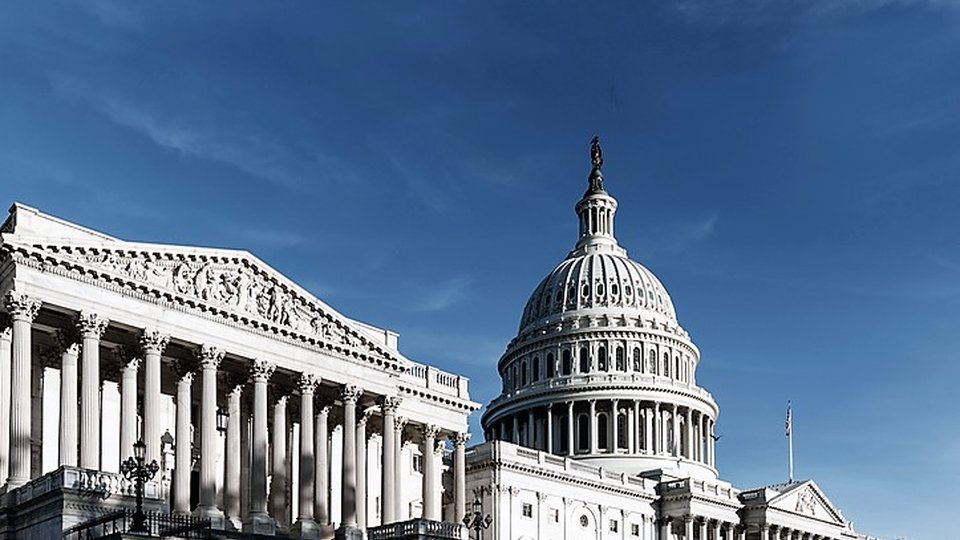Commentary
NAMA’s move to DC signals shifting political winds
In today's telecommunications centered world, the physical location of an association headquarters is less important than it was in 1936 or even 1967. But there is symbolic value in concentrating our forces at the point of greatest danger.

July 20, 2020 by Tim Sanford
I am not surprised by the National Automatic Merchandising Association's decision to relocate its headquarters to the greater Washington, D.C. area. Shortly after I joined Vending Times in 1967, several prominent trade associations with Chicago headquarters moved to the District of Columbia.
At the time, I guessed that these moves were motivated by the growing recognition that the federal government was not going to become smaller and less intrusive any time soon, and that advocacy at the federal level was going to take up more and more of the associations' time.
When NAMA was founded in 1936, the only national vending operation was Canteen Corp. The Illinois, Indiana and Ohio state associations/affiliated NAMA councils were very strong, with members including many of the full-line vending industry's pioneers (e.g., the Courtney family in Indiana, the Sanese family in Ohio, the Hesch family in Illinois, the Swanson family in Nebraska and the Amundson family in Minnesota, to name only a very few). Chicago, which was a center of the U.S. food industry and a great national transportation hub, was a natural focal point.
Establishing the foundation
It's worth keeping in mind that different industries have different advocacy needs. The International Bottled Water Association, for example, eagerly embraces federal regulation because legitimate bottlers and distributors always have been threatened by unprincipled small competitors who simply buy a bunch of 5-gallon jugs and fill them with water from the garden hose. Compliance with federal health and safety regulations, and federal inspection of bottling facilities, are major selling points for IBWA members.
Vending is different. The people who founded NAMA did a tremendous job of looking into the future to anticipate the dangers inherent in automating the preparation, storage and serving of fresh food and single-cup hot and cold beverages. In response to the potential problems that they foresaw, they created the Automatic Merchandising Industry Health Industry Council to develop and implement solutions while the technology was being invented and refined.
This effort was an enduring triumph of collaboration among manufacturers, academics and government regulatory bodies. It recognized that health and safety regulators were very willing to listen to well informed people who could explain the new technologies clearly and make practical suggestions for rules that would protect public health and safety without stifling innovation. That recognition continues to bear fruit in NAMA's effort to standardize a regulatory regime for micro markets.
NAMA always has had effective representation in Washington, D.C. At the time I began looking, though, the industry's primary challenges were at the state and local levels, and centered on taxing and licensing issues. These naturally accompany the appearance of a fast growing new industry that the public, and its elected representatives, know nothing about.
NAMA's solution was the affiliated state councils program, which made it easy for operators to establish and expand regional associations, and to obtain legal, administrative and public/government relations assistance from the national association.
A central headquarters was a good vantage point for overseeing this decentralized structure. And it worked, becoming a very successful grassroots network. NAMA used to make annual President's Awards to state council leaders who had led successful local and regional advocacy campaigns.
Industry needs evolve
But that was then and this is now. The present danger is that the federal government is under pressure to identify and address a whole new kind of problem. Devising regulations that protect us against foodborne illness is much more straightforward than coming up with rules intended to eliminate inequality or save the planet from an assortment of perceived existential threats.
We are confronted by a large number of energized, voluble people who know what they don't like, envision an earthly paradise of one kind or another, and are perfectly prepared to lie down in the middle of the street, kicking and screaming, until somebody creates utopia for them.
It is difficult to know what to do about this, but whatever it is, the District of Columbia will be "the room where it happens." In today's telecommunications centered world, the physical location of an association headquarters is less important than it was in 1936 or even 1967. But there is symbolic value in concentrating our forces at the point of greatest danger.


